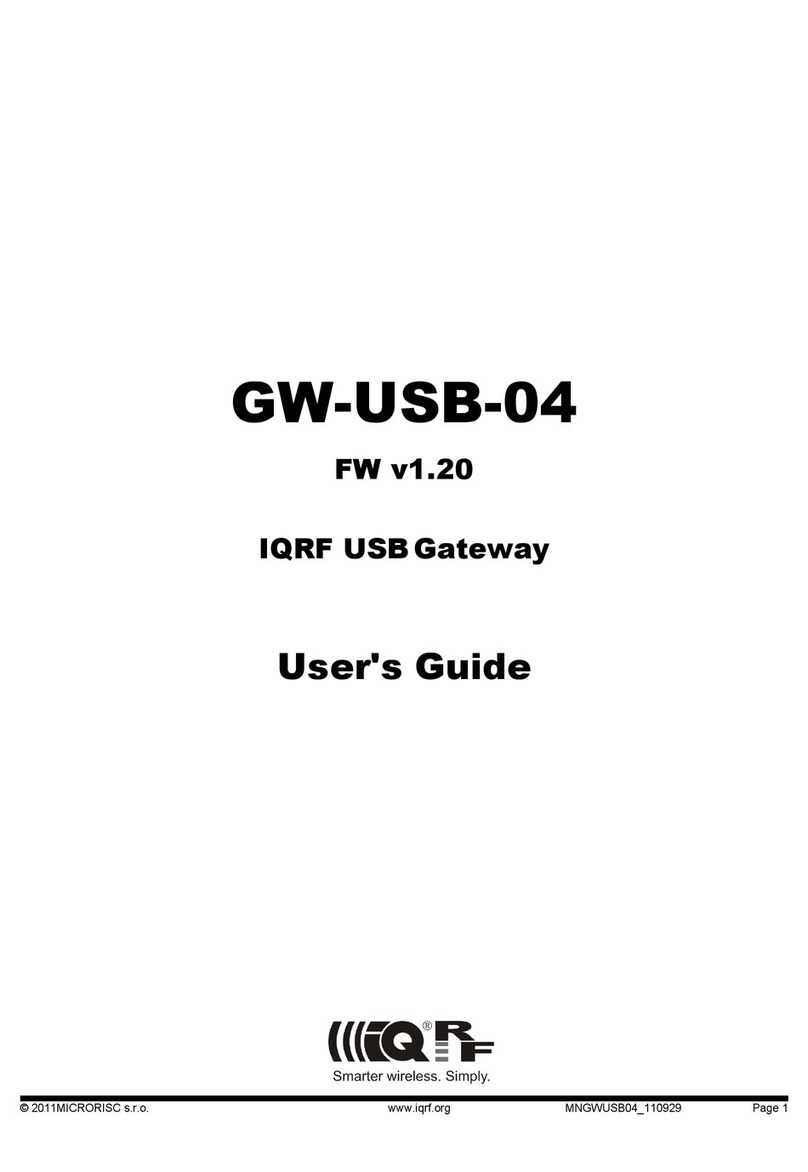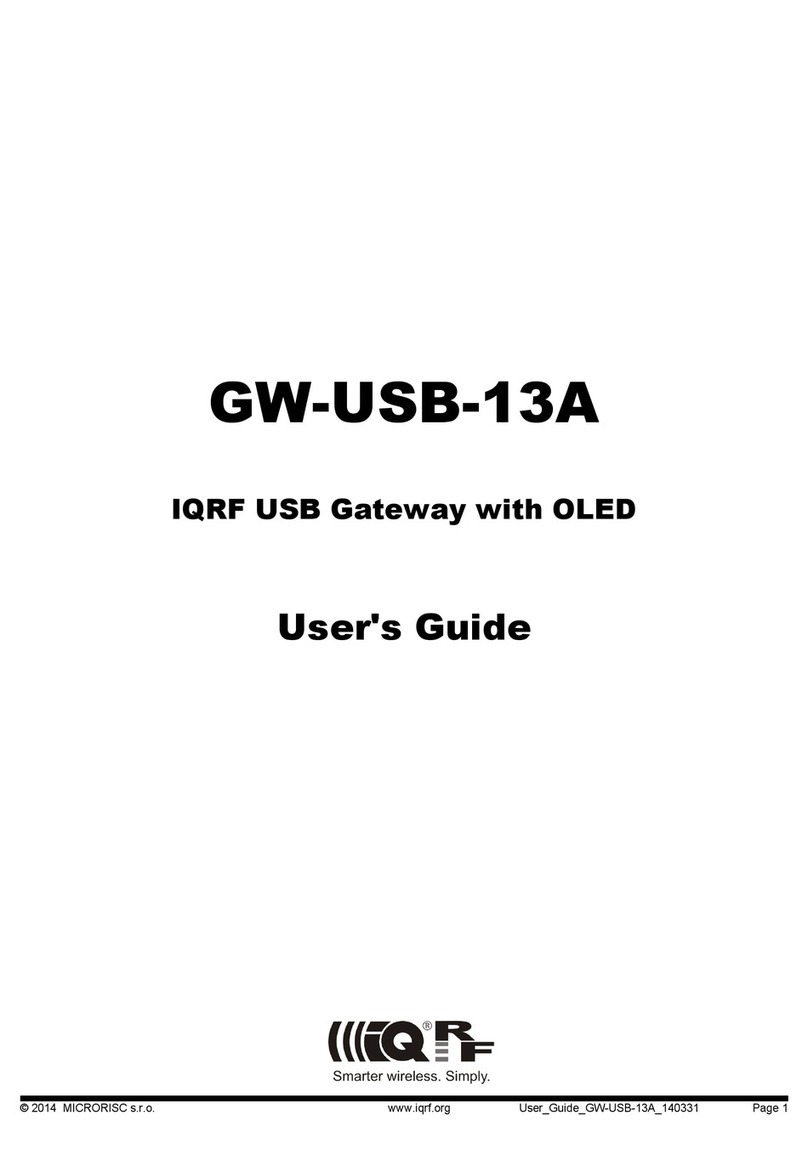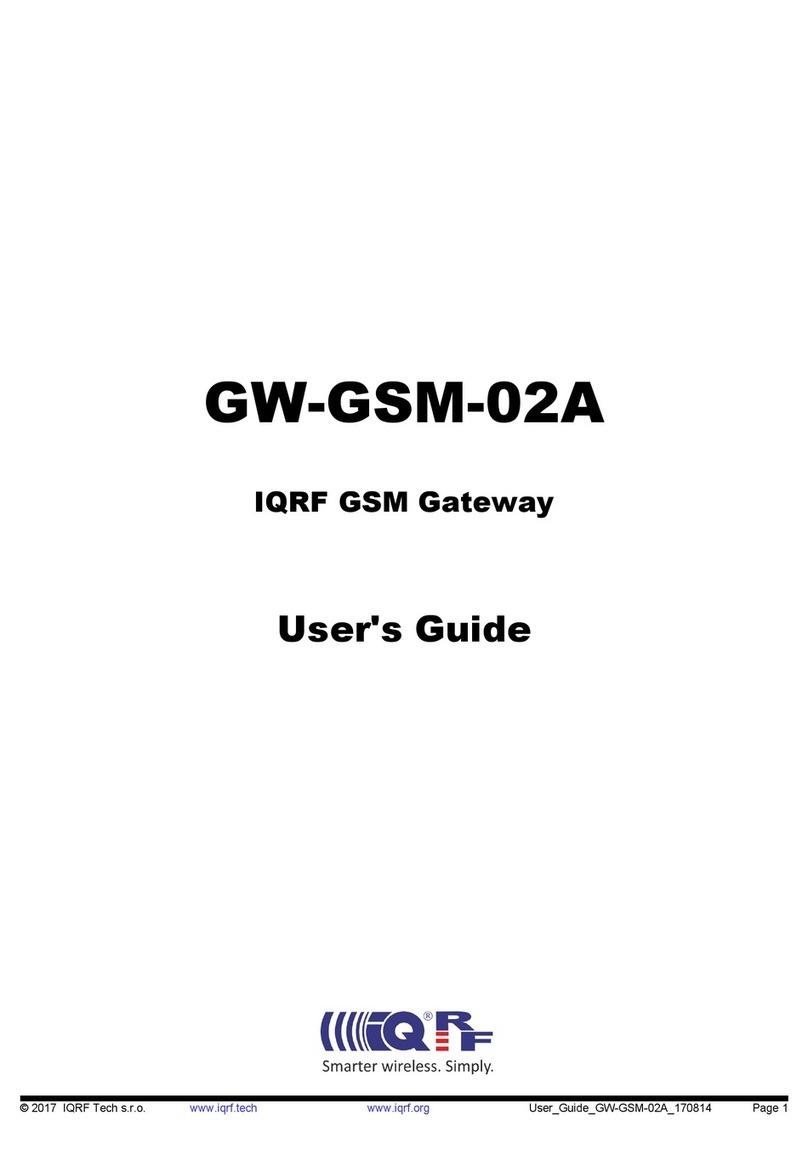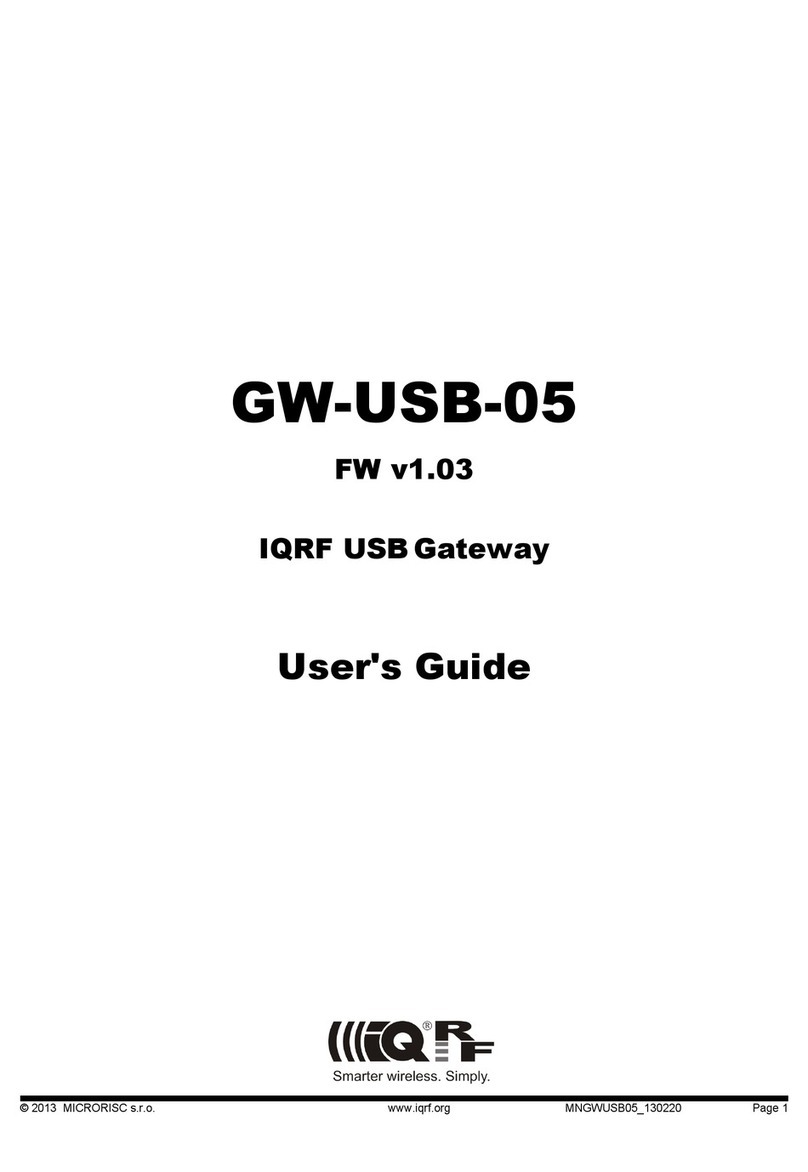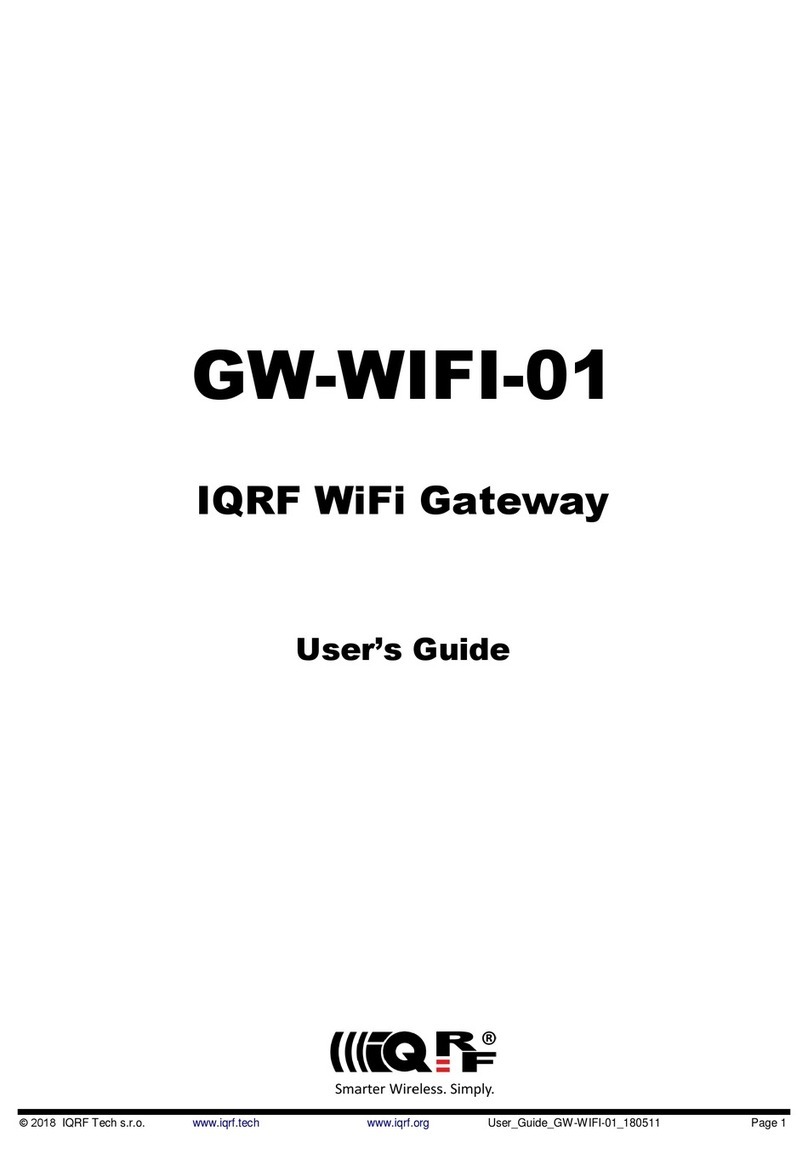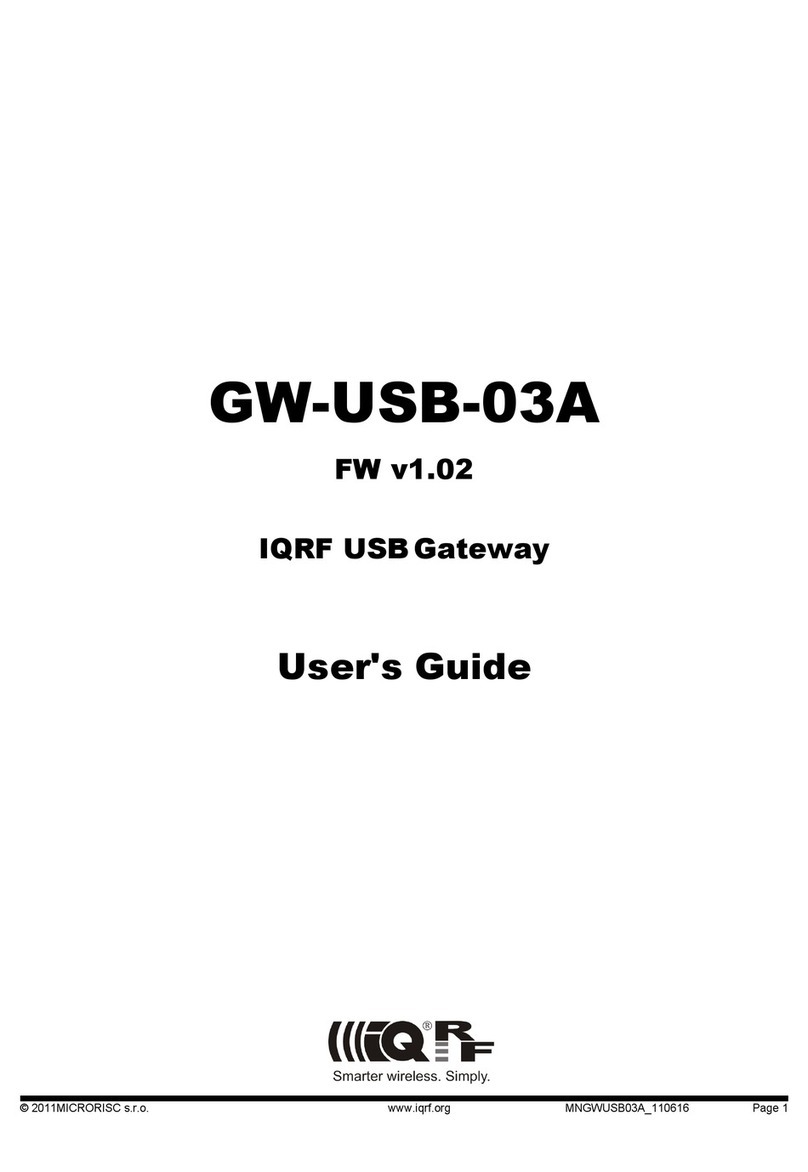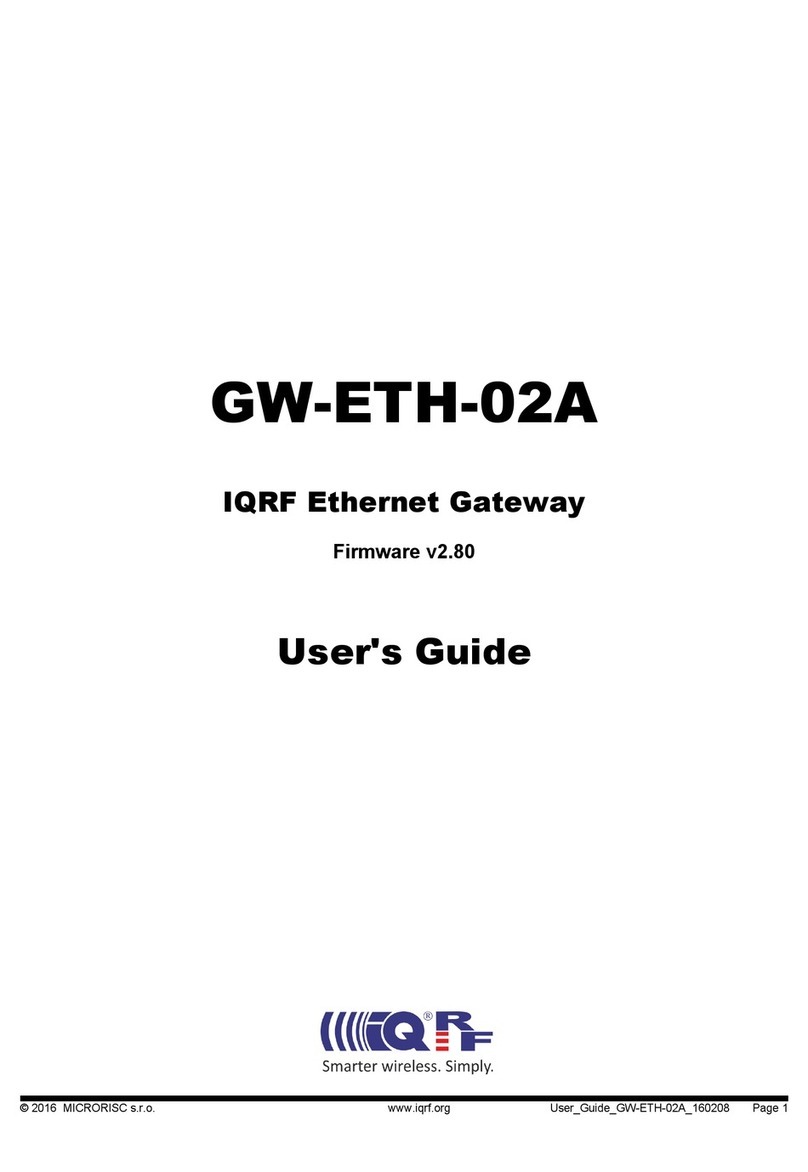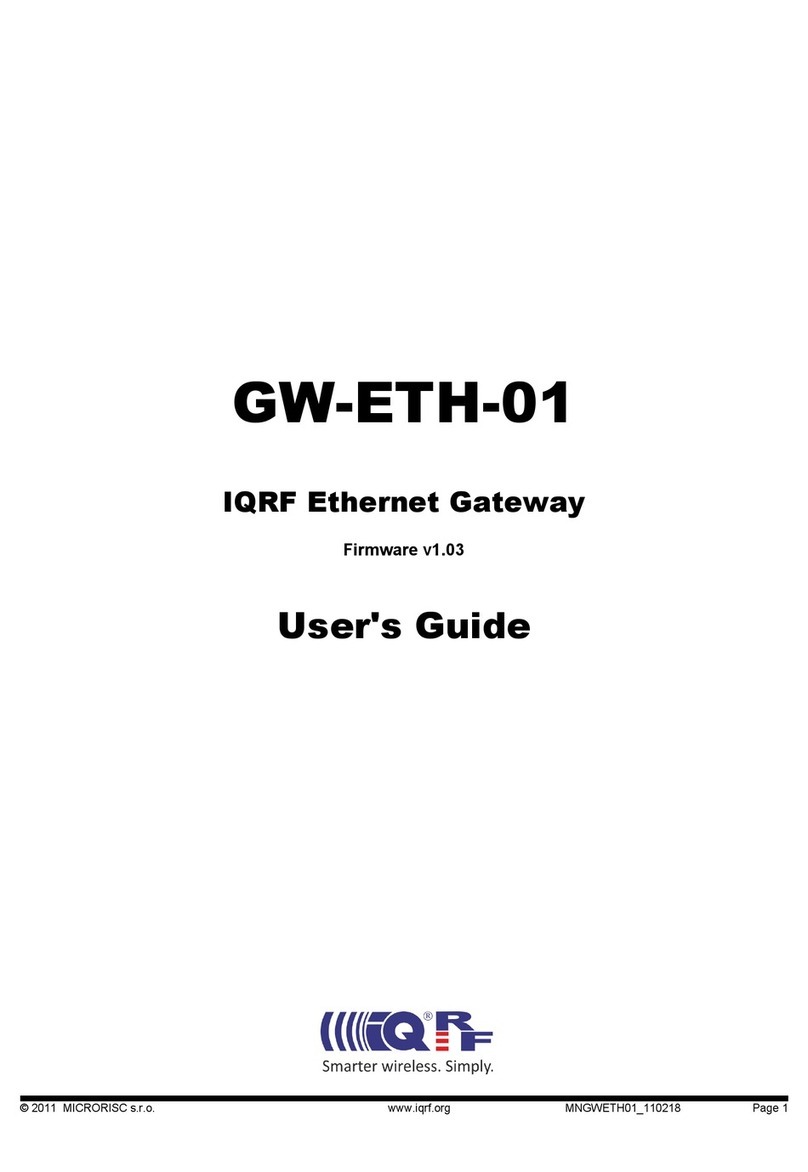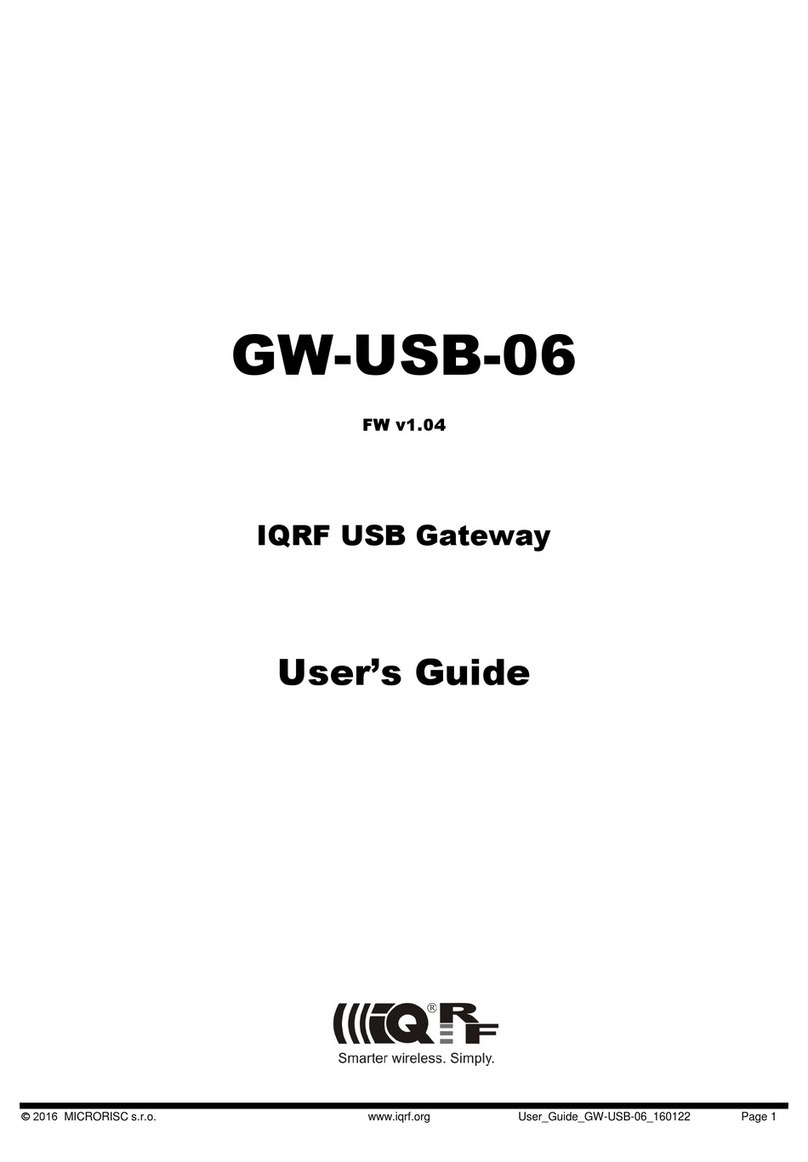GW-GSM Tool
GW-GSM Tool is a PC program for setup, operation, testing and debugging of the GSM part of the gateway. It is free to
download from www.iqrf.or g/321 .
First steps
•Press the power button for at least 3 seconds to wake up the GW (if in sleep mode).
•Connect the gateway to PC using a USB cable.
•Install USB driver – Custom Class. You can download it from www.iqrf.org/89. This driver is the same also for other
I RF USB devices. See the I RF uick start guide www.iqrf.org/235. If the I RF IDE or another software using the
same USB driver (e.g. I RF UDU) is installed, this step can be omitted.
•Run the GW-GSM Tool.
Caution: No other program communicating with any I RF device via USB (e.g. I RF IDE or I RF UDU) is allowed to
run at the same time.
Basic setup
Settings – The tab to configure basic
gateway functions.
•APN – Access Point Name obtained
from the GSM network operator.
•PIN - if the SIM card is protected,
insert the PIN code and press
Update button
•Time – Time in HH.MM.SS format.
•Date – Date in DD.MM.YYYY format.
•Set Time button – sets a new time
to the RTCC. Other settings stay
unchanged. Once the button is
pressed, the time and date are
enabled for editing. Another press
of the button will launch the RTCC
with updatded values.
Use SMS Alarm – If the box is checked
the Send SMS function is enabled.
Telephone number must be specified in
the box below.
Use IP filtering – If the box is checked the access restriction function is enabled. Only IP addresses listed in Safe IPs list
can communicate with the gateway.
Safe IPs – To add a new address to the list, enter the address in the box below the list and press the Add button. To
remove an address from the list, select it and press the Rem button.
Update button - Updates the configuration of the GW-GSM-02.
© 2013 MICRORISC s.r.o. www.iqrf.org UG_GW-GSM-02_131016 Page 9
